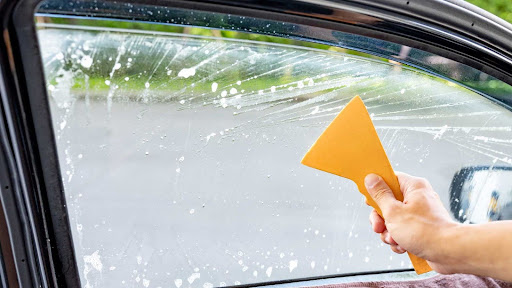Window tinting is incredibly popular among Orlando drivers, and for good reason. It keeps your car cool, adds privacy, and enhances your vehicle’s overall appearance. But before you rush to your local tint shop, there’s one thing you need to be absolutely clear on: Florida’s legal tint limits.
Failing to follow state tint laws can lead to fines, citations, and—worse—having to remove the film entirely. This guide will walk you through everything you need to know about window tint laws in Florida, ensuring your upgrade is stylish and street legal.
Understanding VLT: The Basics of Tint Measurement
The key measurement you’ll hear when it comes to window tint is VLT, or Visible Light Transmission. VLT is the percentage of light that can pass through both the film and the window itself. The lower the VLT number, the darker the tint.
For example, a VLT of 15% means only 15% of visible light comes through the glass, making it much darker than a 70% VLT film.
Florida Window Tint Laws by Vehicle Type
Florida’s laws vary depending on whether you drive a passenger car (sedan) or a multi-purpose vehicle (SUV, van, truck). Here’s the breakdown:
For Sedans (Passenger Vehicles):
- Front side windows: Must allow more than 28% of light in.
- Back side windows: Must allow more than 15% of light in.
- Rear window: Must allow more than 15% of light in.
- Windshield: Non-reflective tint is allowed above the AS-1 line (usually 5–6 inches from the top).
For SUVs, Trucks & Vans (Multi-Purpose Vehicles):
- Front side windows: Must allow more than 28% of light in.
- Back side windows: Any darkness can be used.
- Rear window: Any darkness can be used.
- Windshield: Same AS-1 rule applies—non-reflective tint only above that line.
Reflectivity Rules in Florida
Reflective (mirror-like) tints can look appealing but are tightly regulated:
- Front side windows: Can reflect no more than 25%.
- Back side windows: Can reflect no more than 35%.
Highly reflective tint that exceeds these levels may result in citations and removal requirements.
What About Medical Exemptions?
Florida allows medical exemptions for individuals who require additional protection from sunlight due to conditions like lupus, photosensitivity, or melanoma. To qualify, you’ll need to apply through the Florida Department of Highway Safety and Motor Vehicles and carry your medical exemption certificate in the vehicle at all times.
Legal Tint Stickers Are Required
This detail often gets overlooked: Florida law mandates that every tinted car must display a legal window tint sticker. It should be located on the inside of the driver’s side door jamb and must list the film manufacturer and the VLT percentage.
No sticker? That’s another potential ticket.
Why It Matters in Orlando
Orlando is a city of bright sun and busy roads. Whether you’re commuting down I-4, parking at Disney Springs, or just out on a drive through Winter Park, the benefits of tinting are obvious. But ignoring tint laws can quickly turn an upgrade into a headache.
Working with a professional, certified installer ensures that your window tint in Orlando is applied to legal standards. They’ll guide you to the right shades, apply the required sticker, and make sure your tint enhances—not hinders—your experience on the road.
Conclusion: Stay Cool and Compliant
Window tint is an excellent investment, but only if it’s done legally. Now that you understand Florida’s tint laws, you can make the right choices for your vehicle and avoid unnecessary fines or do-overs.
If you’re considering an upgrade, choose a reputable shop that specialises in legal window tinting in Orlando to ensure long-term peace of mind.


